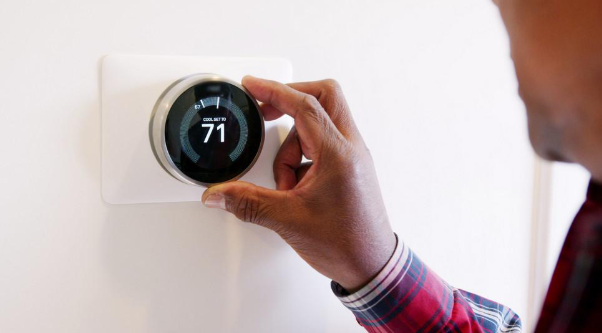In today’s fast-paced world, the concept of home comfort has evolved significantly. Gone are the days when simple temperature control was enough. With the advent of smart technology, smart thermostats have revolutionized the way we manage our living environments by offering advanced features that enhance comfort, improve energy efficiency, and simplify our lives.
The Evolution of Home Climate Control
The history of home climate control dates back to the invention of the first mechanical thermostat, which fundamentally transformed household temperature management. As time progressed, the development of programmable thermostats introduced new ways to save energy and increase comfort. Today, smart thermostats represent the pinnacle of HVAC technology, incorporating sophisticated sensors and machine learning algorithms to provide a seamless user experience.
The growing popularity of smart thermostats is closely linked to increased awareness of energy conservation. Many homeowners are opting for smart thermostats to manage their heating and cooling systems in order to reduce energy consumption and utility bills. By learning from user habits and preferences, these devices can automatically adjust settings that optimize energy use without compromising on comfort.
The potential of smart thermostats goes beyond simple temperature adjustments. They are equipped with features such as remote access, custom scheduling, and integration with other smart home devices. These capabilities allow users to control their home environment from anywhere and enjoy a more personalized level of comfort than ever before.
Smart Thermostats and Health Benefits
Smart thermostats contribute significantly to the quality of indoor air, which can directly affect health and well-being. By maintaining optimal temperature and humidity levels, these devices help create healthier living environments. Additionally, many smart thermostats provide alerts when it’s time to change filters or perform maintenance, which enhances indoor air quality and system performance.
The integration of smart thermostats with HVAC systems can prolong the system’s lifespan. According to expert sources, heating, ventilation, and air conditioning systems can last 15 to 20 years with appropriate maintenance. Regular upkeep facilitated by smart thermostats ensures that systems operate efficiently, reducing wear and tear that can lead to costly repairs.
Furthermore, studies show that air conditioners receive a significant life extension of about 40% when they are regularly maintained. Smart thermostats play a vital role in this process by providing timely reminders for maintenance and enabling easier monitoring and adjustments. By investing in smart technology, homeowners can not only enhance their comfort but also protect their HVAC investments.
Economic Impacts and Energy Savings
One of the primary advantages of smart thermostats is their ability to help homeowners save on energy costs. By automatically adjusting settings based on occupancy patterns and external weather conditions, these devices can significantly reduce both heating and cooling expenses. This smart management contributes to a more budget-friendly operation of household environmental control systems.
Projected spending on HVAC repair and maintenance is forecasted to surpass $10 billion in the next couple of years. Smart thermostats offer a preventive approach that can mitigate such expenses by ensuring that systems operate efficiently and integrated diagnostics help detect issues early on. With fewer breakdowns and extended maintenance periods, homeowners can allocate their finances to other areas of home improvement.
Additionally, widespread use of smart thermostats could collectively result in massive energy savings on a national scale. As these devices become commonplace in households, the reduction in energy consumption could contribute positively to both environmental sustainability and economic productivity. By adopting smart thermostat technology, homeowners are actively participating in a larger movement towards green living.
The Future of Smart Technology in the Home
The future of smart thermostats is intertwined with the advancement of other smart home technologies. The seamless integration of these devices with interactive platforms and voice assistants provides increasingly intuitive control over the home environment. Consumers can expect further innovations that enhance the interoperability and intelligence of smart climate management systems.
As data analytics and artificial intelligence technology continue to mature, smart thermostats will become even more efficient at predicting and adapting to user preferences. This increased personalization will help improve comfort levels in a more dynamic and responsive way. Moreover, future models may provide detailed insights into energy usage patterns, presenting homeowners with actionable data to further optimize their homes’ energy efficiency.
The ongoing evolution of smart home technology foreshadows even more advanced features and capabilities in upcoming devices. The possibility of these thermostats interacting with broader smart home ecosystems suggests a transformative impact on how households function. As consumers become more attuned to the benefits of integrated smart systems, the popularity and influence of smart thermostats are only expected to grow.
Smart thermostats represent a significant leap forward in home comfort management. Their ability to provide precise control, enhance energy efficiency, and contribute to health and economic benefits makes them an attractive option for modern homes. As technology continues to evolve, smart thermostats will likely become an integral part of homes, setting new standards for comfort and sustainability.










